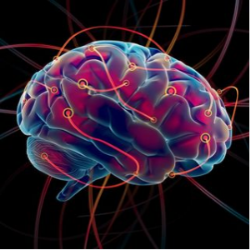I recently heard someone describe our brains as lazy — they were explaining the concept of confirmation bias, I think. The (simplified) perspective was that the brain doesn’t do anything beyond what it absolutely has to in order to quickly and effectively arrive at a decision, and therefore “ignores” what isn’t relevant. I understand that interpretation.
I take a different view
I see our brains as the epitome of operational efficiency. If you have ever spent time in a manufacturing or operations environment, you’ll easily relate. In those settings, every move, large or small, is calculated to maximize productivity and optimize cycle time. There is no tolerance for waste — of time, materials or energy. Our brains are built to do exactly the same, with one overriding objective: To protect us from anything that could possibly be unsafe. Secondarily, our brains are built to seek and find pleasure, and sometimes these two drivers are at odds. (But that’s an entirely different post!) According to the NeuroLeadership Institute, “Our brains have evolved to really like certainty, which stems from our basic drive to survive. We have evolved to predict and control our circumstances because doing so optimizes our ability to live.” It would follow, then, that any change that brings uncertainty – which is essentially all change – feels like an immediate threat and naturally results in resistance.Yet – there are some changes that are exciting rather than frightening
Hungarian endocrinologist Hans Selye, known as the father of modern stress research, sorted the stress we experience into two types, one he characterizes as negative (a threat) and the other as positive (an opportunity). Both of these scenarios elicit physiological and emotional responses — and some are common for both scenarios, such as an increased heartbeat. However, distress (the negative type of stress) also brings about increased blood pressure and faster and shallower breathing. And emotionally, distress stirs up fear, anxiety, nervousness and confusion. On the other hand, eustress (the positive type of stress we interpret as opportunity) results in increased cognitive function and decreased oxidative stress. And emotionally, eustress delivers motivation, focus, excitement and energy.The million dollar question…
What if we could retrain our brain to interpret any change as an opportunity rather than a threat? It turns out that we can. According to Deepak Chopra: “Our ability to rewire our brains remains intact from birth to the end of life.” This is a relatively new discovery – and it is outstanding news for us!But first, another quick brain lesson
We know that the most rapid brain growth occurs early in life. Here’s what it looks like:- At birth, every neuron in the cerebral cortex has an estimated 2,500 synapses; by the age of three, this number has grown to a whopping 15,000 synapses per neuron. That’s 6 times the synapses that existed at birth …in just 3 years!
- The average adult, however, has only about 1,000 synapses. That’s 1/15th of what we had as a 3-year old!





